
设计单位 dongqi Design栋栖设计
项目地点 中国上海
建成时间 2022年2月
建筑面积 1600平方米
设计团队应XC273 by XCOMMONS委托,改造位于上海市中心的一座三层旧厂房,作为其全新的多功能商业空间。这栋建筑起初为毛巾厂,随着岁月的变迁,其所承载的功能经历过数次改变,如今已难以完整追溯。厂房最终呈现在建筑师面前时,是如废墟般的状态,原始的结构直接显露在外。
业主方决定在一定程度上保留这种状态。设计团队以发展建筑原本的特征作为此次改造的出发点,通过模糊时间,真实呈现不同时期的材料和构造,为这个重生的复合功能空间创造出有别于传统的零售体验。


在行动流线上,三个纵向的交通系统被植入到建筑中,避免了尽端空间的出现。平面布局也体现了对空间功能的研究。无论参观者选择哪一条路线游览,都能实现动线上的连续,发掘各个位置的精彩,获得独特的空间体验。

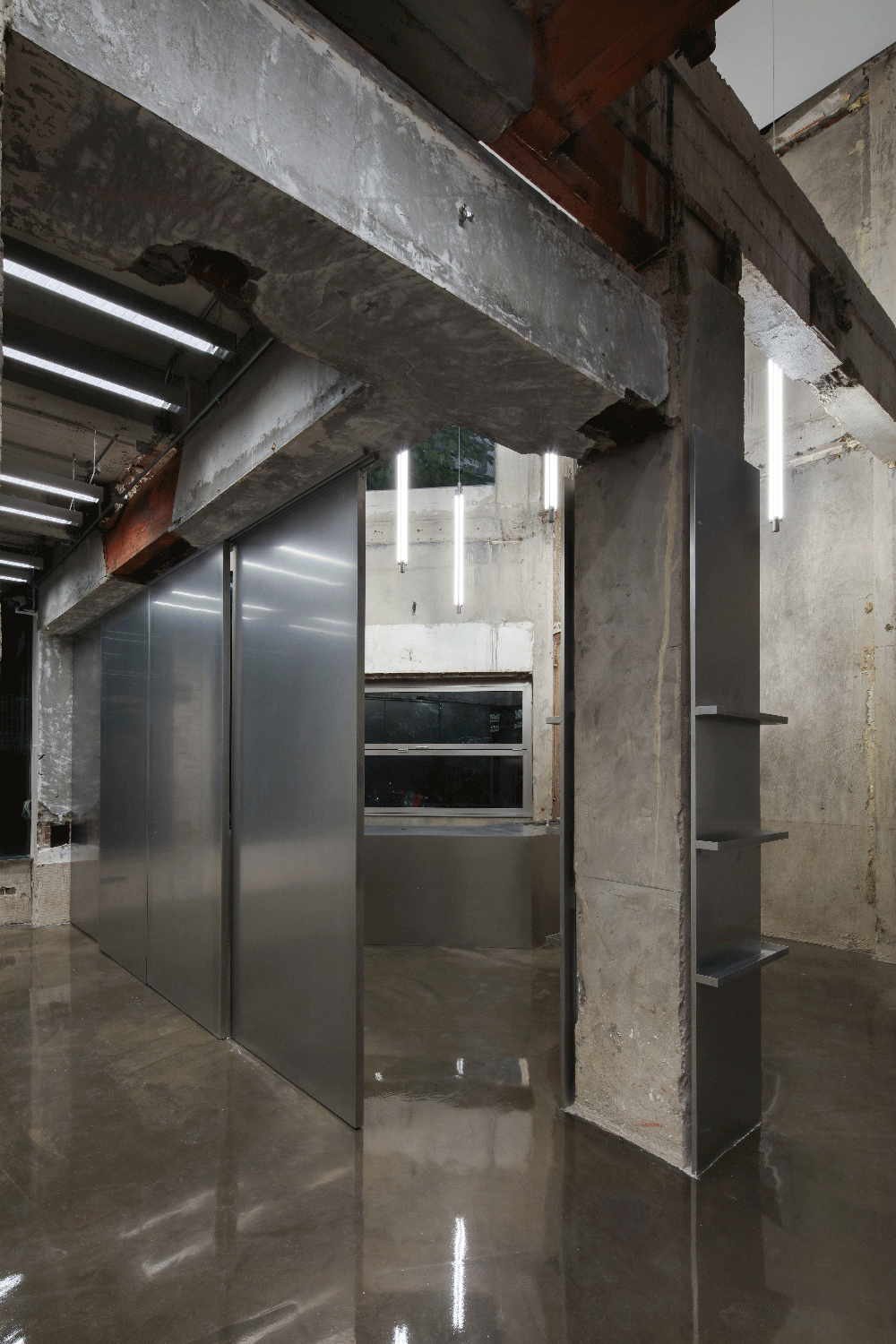
一条贯穿前后两块区域的“声音隧道”在设计上更加强化了上述体验。功能与交通被创造性地融合,纯粹的内部空间如一台时空机器,使隧道长度被放大的感官体验所模糊。

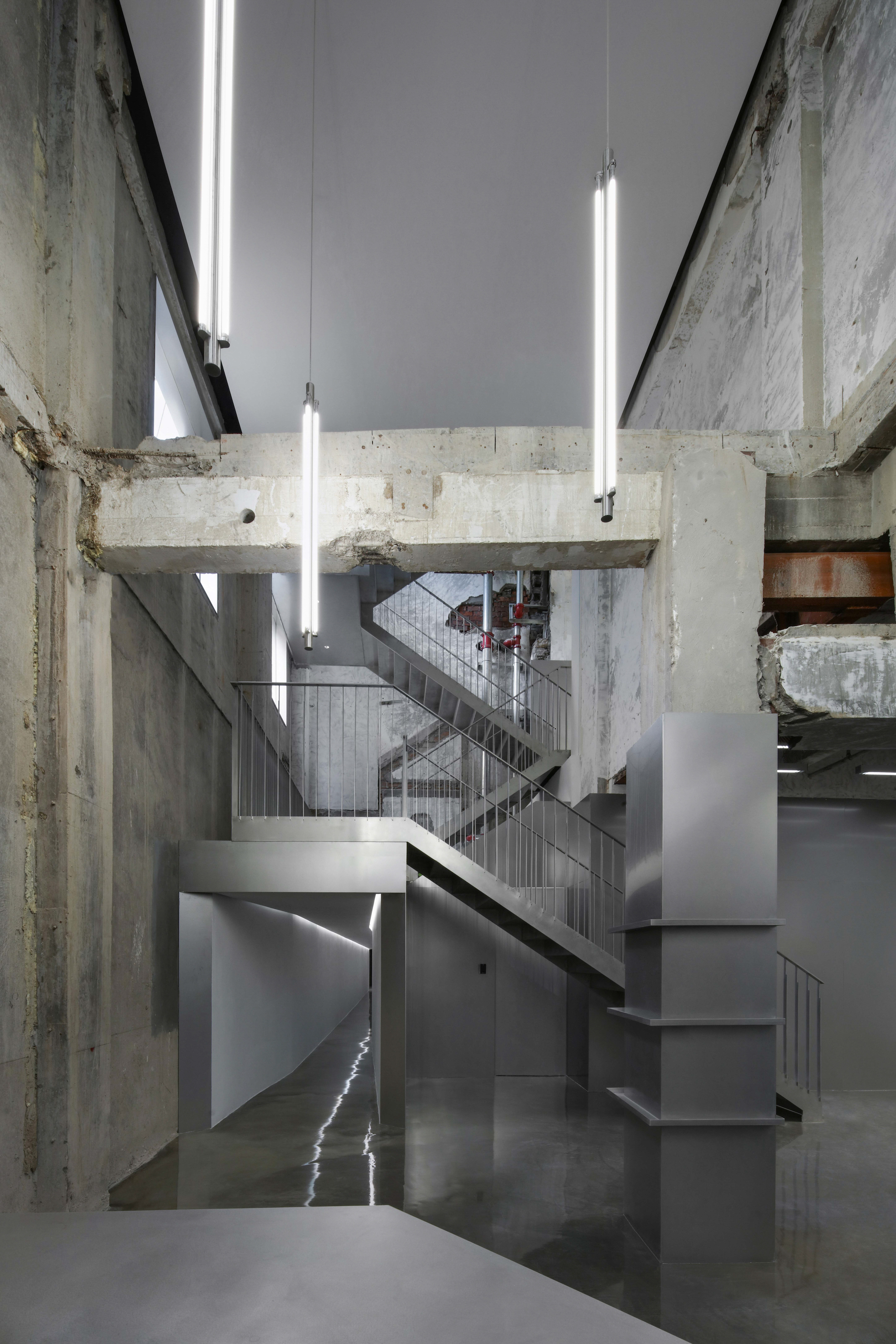

如此水平上的穿梭体验同时也发生于纵向空间。根据空间特性,团队为每层楼设计了不同的灯光系统,以此来界定不同区域。从特定的角度向上看,视线可贯穿整个建筑,直达三楼的天花。此时,三层各具特征的天花如万花筒般交叠在一起。这样的“迷失感”是设计期待赋予参观者的体验。因此,镜面的材质也被较多地使用于墙面和天花,无论哪个区域均有因反射而产生的惊喜。



空间中有不同的路径交织,但团队仍将位于二层中庭的挑空打造成建筑重要的核心。设计师仔细推敲了位于其下方的一个室内水池的侧面曲线,让这一区域成为连接空间、人、产品的重要媒介。整个一层地面表面的树脂材质仿佛是水面的延伸,将天花的灯光系统反射成波光粼粼的形态。



保留原始建筑表面的历史质感,是这次改造的一个基础逻辑。因此,像寺庙般围合阵列的柱子,朝着水池和挑空区域的表面,以及这次改造新建的基础结构均被暴露出来,两侧则被天然玉石、实木多层板或金属包裹,玉石和实木多层板内侧均衬有一块不锈钢厚板作为结构。


这种“夹心”的方式像层积岩一般,物质化了建筑的所经历的所有时间点。相同逻辑的构造延续于空间的每根柱子,甚至是陈列道具上。



二层地面的呼应一层的质感,但是通过不同的表面处理降低了整体反射度。如考古现场般,二层原始的水磨石地面经仔细清理后做表面养护,在周围混凝土抛光地面的衬托下,彩色几何形纹样成为建筑中最富色彩的历史记忆。

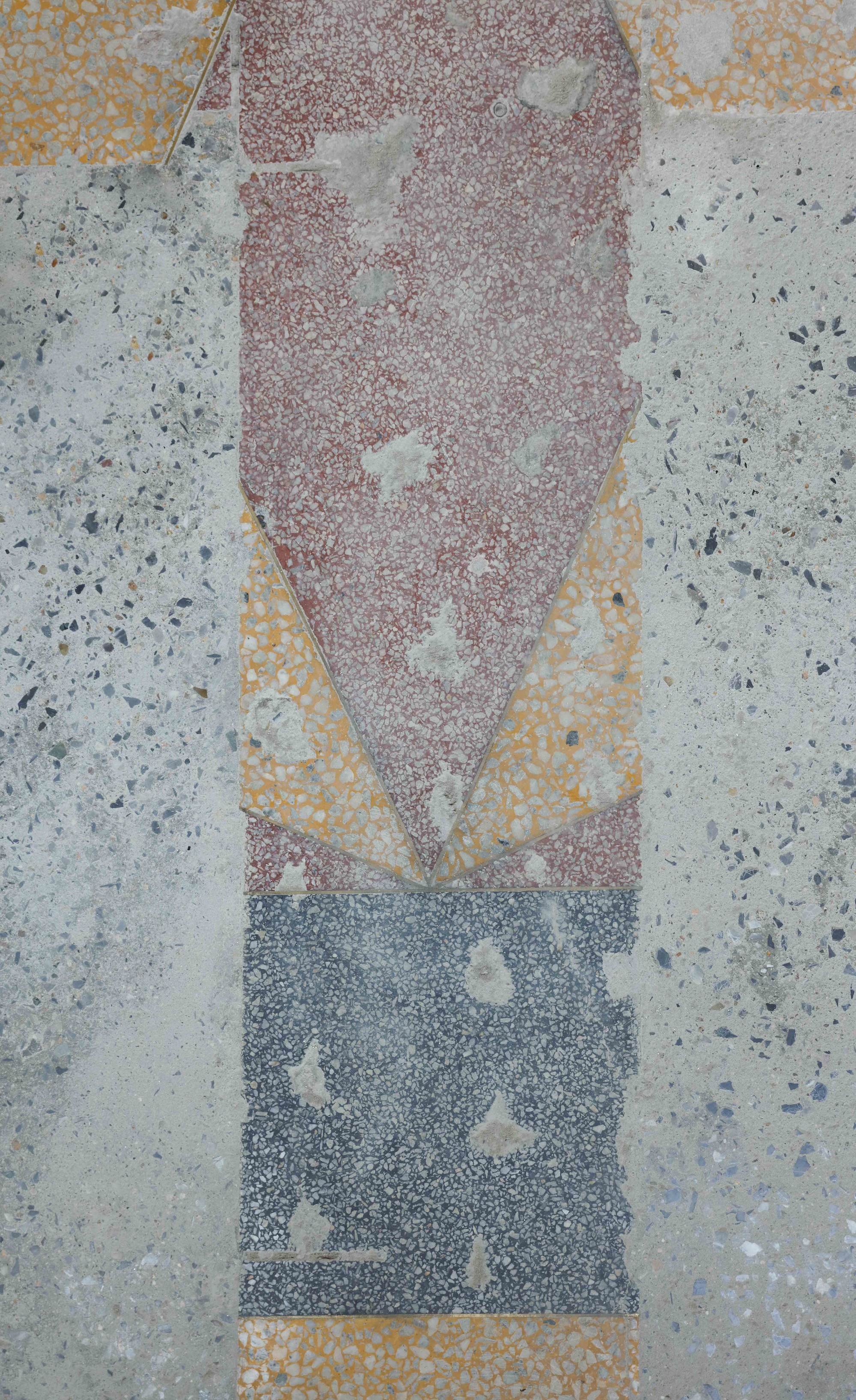
三楼的设计在视觉上回归了平静。纯白的墙体加强了坡屋顶旧木结构的空间效果,方形排列的窗户将阳光有序地引入室内,固定玻璃与可开启部分的比例则经过仔细推敲,这时天空和城市就成为空间最好的点缀。



有别于公区白色的空间,端头的贵宾室以同样纯净的黑色展现。不同的材质在统一的黑色完成面作用下,为空间赋予了连续性。同时,大面通透的开窗让外部的植物渗透到空间中,打破了室内黑色的沉寂,营造出独立的私人体验。
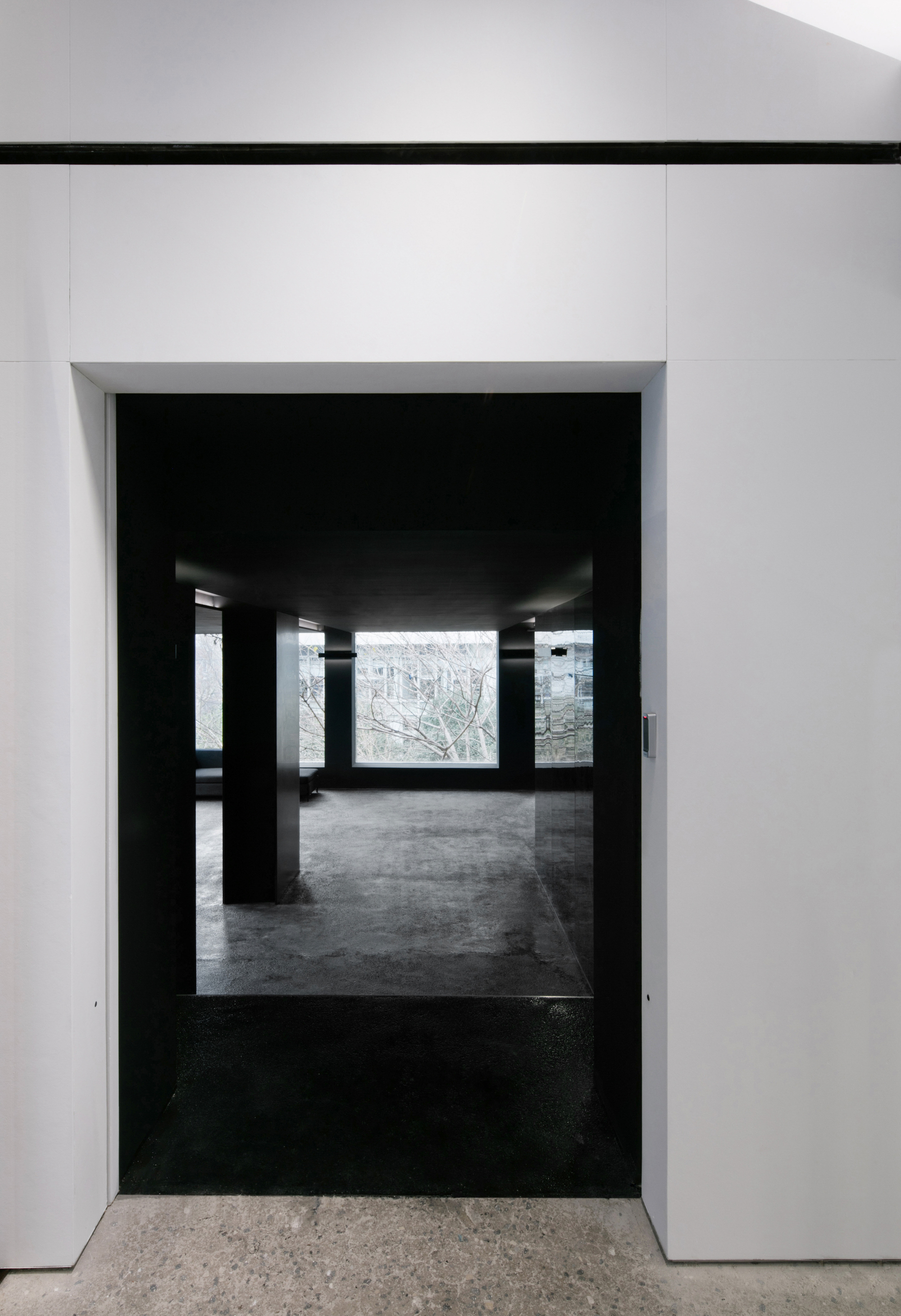



建筑内原有竖向交通全部移除,新建楼梯重构了整体流线。在与结构工程师的紧密配合下,不锈钢楼梯以纯粹的结构形式呈现,没有任何其他材质的附加。


楼梯和中庭区域的不锈钢护栏通过穿插,从结构钢梁上直接“生长”出来。竖向构件在纯粹的矩形截面上根据人手的尺度切去一角,提升舒适度的同时,也创造出丰富的反射效果。不锈钢表面打磨处理,使护栏在空间中的视觉是一种强烈而短暂的存在,它反射着室内或户外的光,并将环境与光影交织在一起,忽明忽暗。
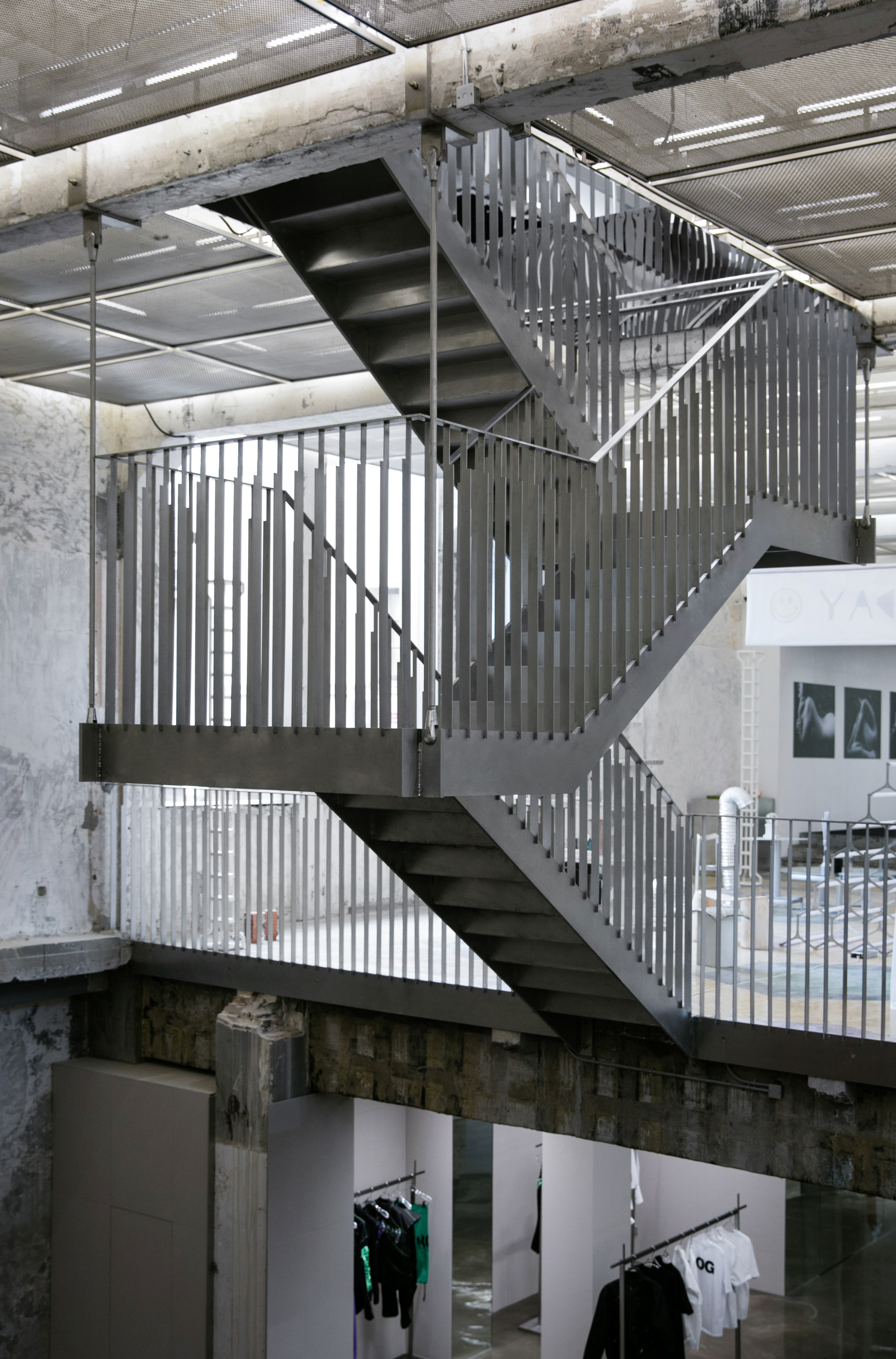


入口内退的大门与原外立面之间设置了一个隧道,平面经过推敲后以一个梯形呈现,使客人进入时产生透视错觉,同时改变着自己的情绪。
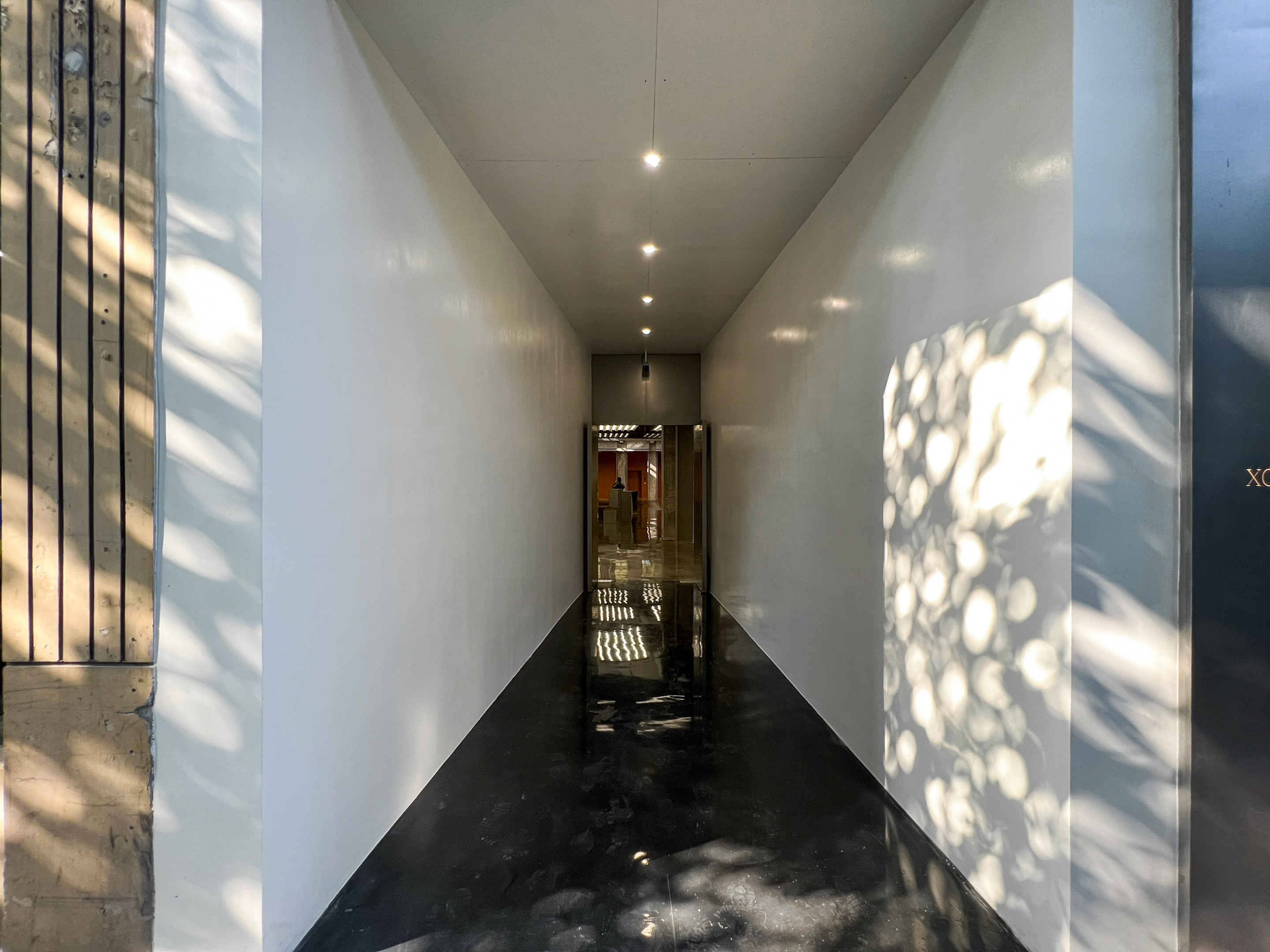
场所的历史是让人着迷的,它从最初的勘测阶段开始就不可避免地介入到设计之中。以毛巾厂的初始功能起,这栋建筑随着时间推移,历经了数种功能的转变和对空间本身的干预。本次改造,设计团队保留了空间的所有差异,以便更客观地展现建筑的历史。当人们走进它时,过去与现在的边界是模糊的,如同步入一个打破线性时间的永恒空间。

附:
项目英文介绍
Situated in the heart of Shanghai city, the three-story old factory that dongqi Design was commissioned to renovate presents itself as a historical ruin where the raw structure was truly exposed in all its magnificent. Conscious of this beauty, dongqi Design developed its own approach that enhances the peculiar characteristics of the building by creating a contrast between the old and new finish materials for this new fashion and art hub that is going to break the rules of the retail experience.
The presence of three voids inside the space allowed the studio to develop an internal circulation system without a dead-end point. In the plans, it is possible to see how the deep study of the functions and the space could create a continuous internal flow enabled by different paths, allowing visitors to have a unique spatial experience filled with surprises, discoveries and unfolding of the space itself.
To enhance this journey inside the XC273 retail store, a sound tunnel was placed at the ground floor near the café area to allow visitors to directly connect the two different areas of the building in an immersive experimental music experience. Like a space-time machine, the tunnel creates unique moments where the reflection of the floor engages with the perception of the visitors, altered also by the stretched length of the corridor.
This horizontal time travel can also be experienced vertically as visitors may reach the third floor visually from the first and the second floor. Having this panoramic view of the three-story building, it is possible to notice that each floor reveals its own paving and ceiling. A Kaleidoscope of identities.
In order to increase this sense of the journey as if one was exploring a forest, mirror finish was applied to walls and ceiling to disorient the visitors so that every single corner can become a moment of surprise, as described in the Stendhal’s syndrome.
Despite the different paths in the space, the main void in the atrium is the real core of the building. To enhance the physical presence of the void, a water pond is placed in the middle, engaging with people and with the space. Its reflection, the continuity of the floor and the liquid element create intriguing effects where the ceiling lighting is mirrored onto the floor.
Following the idea of exposing the existing structure finish, all the surfaces of the column surrounding the main void, like in a temple, are exposed towards the water pond, wrapped with different new materials such as stone, wood and metal on the other two sides.
By using different and contrasting materials within the same architectural space, the studio intended to create a more dramatic perception. This "sandwich" approach is later on extended to the display fixtures design, where the principle for the design of the column near the main void also applies, in order to create a sense of spatial continuity.
This design philosophy is also true for the floor, where new paving finish is used in contrast with the old to enhance the peculiar existing terrazzo floor composed of geometrical patterns.
Another characteristic that defines the project's design approach is the ceiling design that differentiates each area by using distinct types of lighting customized by dongqi Design.
At the end of the path, the third floor is accessed by the stair suspended above the water pond, which enables visitors a more intriguing experience by crossing through the ceiling, a tiny cut into the slab.
Up there, the white finish has been designed to enhance the old wooden structure of the pitched roof while the big square opening lets light inside the space and projects the visitors towards the city and the sky outside.
In order to balance the white and pure space of the third floor, the VIP room reveals itself as a dark gem. Different materials give continuity to the space thanks to their black color finish, which, during spring and summer, allows the color of the trees nearby to penetrate into the space, creating a unique private experience.
The key element connecting all the spaces is the design of the stairs, a milestone in the design process and in the journey path. After extensive consultation with structural engineers, the stairs are presented as they are in their pure structure. All the decorative elements have been removed in order to focus on their function.
This decision, which is also aligned with the will of having a coherent language with the entire space of revealing and showing the structure, is enhanced by the details of the balustrade.
The fence of the balustrade is designed as a simple element sliding into the structural beam of the stairs at the bottom while having a profile on the top to allow visitors to grab the handrail without interfering with the fence.
Due to its stainless-steel properties, the stairs are a strong and ephemeral presence inside the space, creating interesting effects with the sun and light reflections.
As the starting point of the journey, the entrance is the first highlight point that the visitors are going to approach. By subtracting potential retail space, dongqi Design decided to create this entrance that, like an underground tunnel, leads people into an immersive experience. A blurred space, it is where the boundary between public streets and retail are dissipated.
As part of the design process, the approach to the old factory is influenced by the history of the building. During the initial phases of the site checking, the attention of dongqi Design was caught by the past of the building.
Born as a factory, the building has been transformed by several architectural interventions in different parts over time. Conscious of this, dongqi Design decide to keep all the differences of the space and show the history of the building so that people walking in could feel that the boundaries between the past and the present are completely blurred, as if they had walked into a timeless space.
设计图纸 ▽





完整项目信息
设计时间:2021年3月
建成时间:2022年2月
建筑面积:1600平方米
项目地点:中国上海市胶州路273号
设计单位:dongqi Design栋栖设计
设计内容:建筑、室内、灯具、道具设计
设计总监:姜南
项目设计师:Edoardo Nieri、何玮婧
团队:张丹怡、汪宁、黄炳堃、杨瑞晟、周奕君、屠一昕、颜已珺、陈博文、尤文静
合作方
项目策划:XCOMMONS
艺术指导:Ximon Lee
结构设计:上海三垚
项目管理与总包:上海境季
摄影:刘瑞特
版权声明:本文由dongqi Design 栋栖设计授权发布。欢迎转发,禁止以有方编辑版本转载。
投稿邮箱:media@archiposition.com
上一篇:设计酒店77 | 喜林苑·沙溪:停留即是风景
下一篇:镂空石盒:兰州理工大学西校区图书馆 / 浙江大学建筑设计研究院